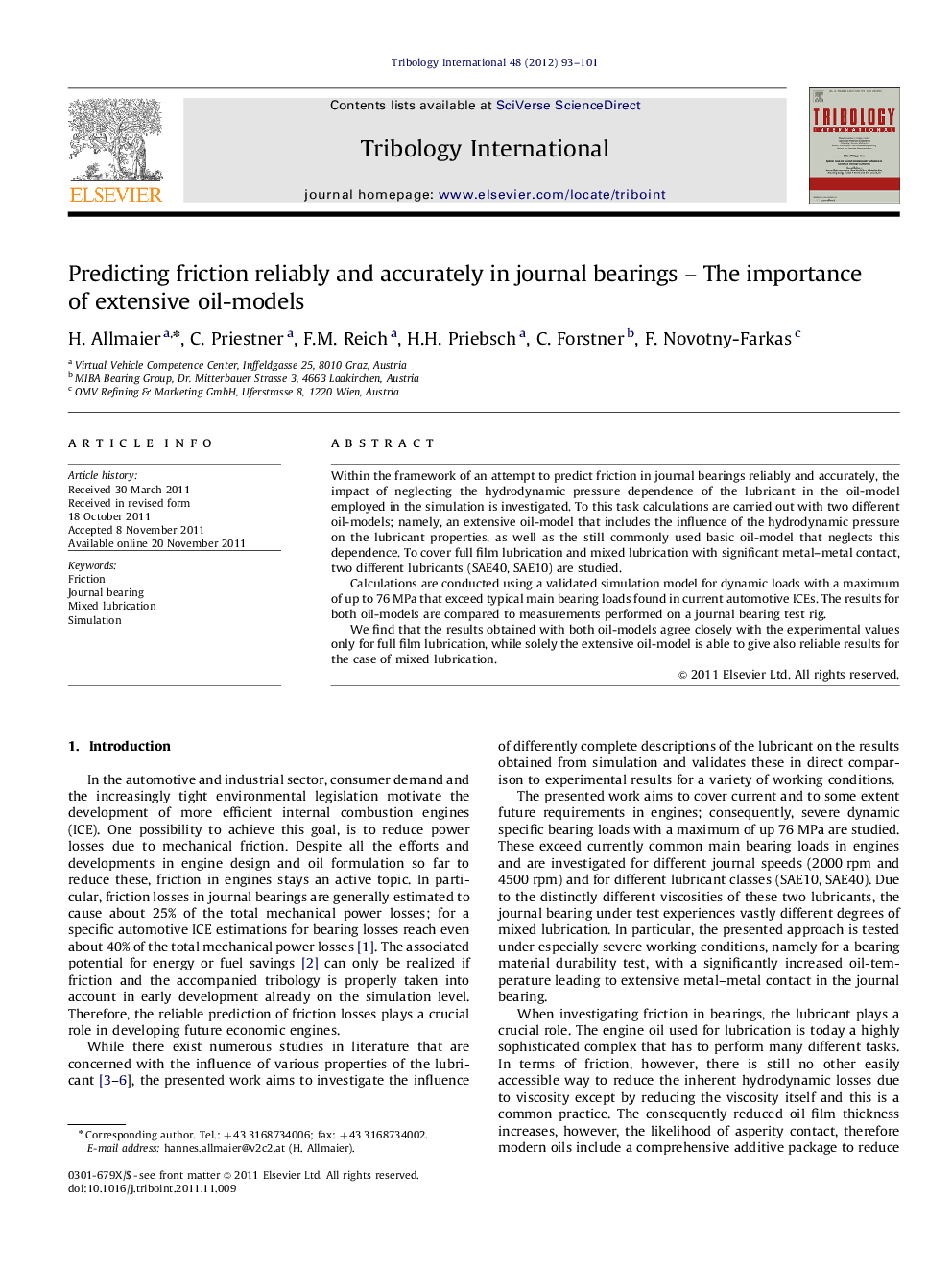| Article ID | Journal | Published Year | Pages | File Type |
|---|---|---|---|---|
| 615399 | Tribology International | 2012 | 9 Pages |
Within the framework of an attempt to predict friction in journal bearings reliably and accurately, the impact of neglecting the hydrodynamic pressure dependence of the lubricant in the oil-model employed in the simulation is investigated. To this task calculations are carried out with two different oil-models; namely, an extensive oil-model that includes the influence of the hydrodynamic pressure on the lubricant properties, as well as the still commonly used basic oil-model that neglects this dependence. To cover full film lubrication and mixed lubrication with significant metal–metal contact, two different lubricants (SAE40, SAE10) are studied.Calculations are conducted using a validated simulation model for dynamic loads with a maximum of up to 76 MPa that exceed typical main bearing loads found in current automotive ICEs. The results for both oil-models are compared to measurements performed on a journal bearing test rig.We find that the results obtained with both oil-models agree closely with the experimental values only for full film lubrication, while solely the extensive oil-model is able to give also reliable results for the case of mixed lubrication.
► A simulation approach is proposed to predict friction in journal bearings. ► The method covers full film and mixed lubrication. ► Investigation of the role of the lubricant model for friction prediction. ► Comparison of the results to measurements conducted on a journal bearing test-rig. ► The results from the presented model agree closely with the experimental data.
